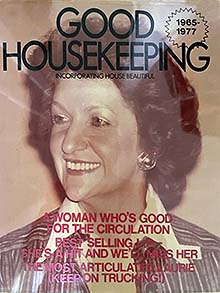 |
Laurie Purden and the women who make magazines |
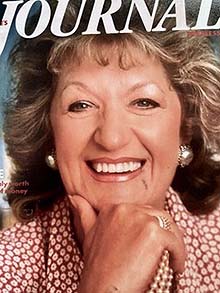 |
By Wendy James
Laurie Purden, former editor-in-chief of Good Housekeeping, lived and worked through – and helped make – a golden age for magazines. Her recent death is a watershed and provides an opportunity to celebrate her role – and that of other women – in the industry.Laurie employed me, a single mother of two, as editor of Womancraft, a sister magazine to Good Housekeeping, in the early 1970s. She not only remained a friend but, in a way, prompted me into writing my book, A Life in Magazines.
In 2009 we travelled together on the Tube to Between the Covers: Women’s Magazines and their Readers, an exhibition at the Women’s Library that examined how things had changed since the 1600s. Laurie held my arm as we walked through the London streets. She had not long before been diagnosed with macular degeneration, a terrible shock for someone whose visual skills were part and parcel of her long career. Just a small amount of sight was still there. We peered through the glass of displays at preserved pages and tried to read wall-mounted displays divided into themes: love and relationships, house and home, fashion and beauty.A great photo summed up the exhibition: three women sitting under the driers at a hairdressers reading Marie Claire, Spare Rib and Housewife, a combination that sums up much about late 20th century magazines – though they could also have included Hello!, OK! and Grazia, favoured by salons before the Covid crisis. Laurie had been editor of Housewife, launched by Picture Post publisher Hulton in 1939, in the 1950s.
It was a surprise to me that Bella was not in the timeline – this import from Germany had been a grenade in its effect on Britain’s weeklies for women. Then Laurie asked if we could find something about Good Housekeeping, where, as editor, she had greatly increased the circulation – earning herself an MBE in the process. However, Good Housekeeping’s significance to British publishing and homes wasn’t given the space it deserved. The most prominent reference to it came via a huge photo of Louise Chunn in a hall of fame. Louise had left the magazine by the time of the exhibition, but still seemed to be its representative.In the hall of fame we approved of the inclusion of Claire Rayner, the former nurse who was there at the start of my time in magazines and went on to be a long-serving agony aunt and author of 90 books! Linda Kelsey was also there. Linda was a Cosmo girl from the age of 20 when she joined as a junior sub-editor and rose to become editor after Deirdre McSharry retired, and later edited She (a title that was ultimately killed off by Hearst Magazines UK in 2011) before becoming managing editor of InStyle. We found Katharine Whitehorn, a half year older than Laurie and a contemporary. She started out as a sub on a Woman’s Own in 1956 where Laurie was a junior secretary to the managing editor, James Drawbell. Both women moved on to the groundbreaking photo weekly Picture Post but after that their paths diverged. Katharine established herself as a columnist on The Observer with a keen and humorous focus on the changing role of women, then became agony aunt of Saga magazine (she died in 2021).
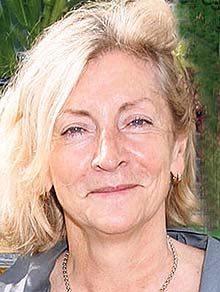 |
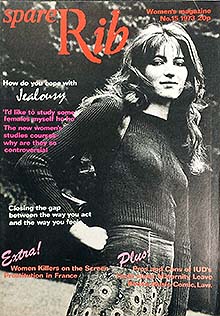 |
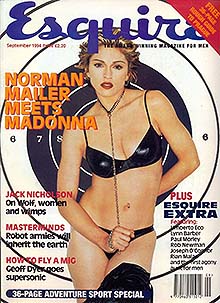 |
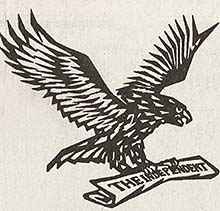 |
| Rosie Boycott has been editor of feminist agenda-setting Spare Rib (1973), Esquire (with Madonna on the cover in 1994), and The Independent and Daily Express newspapers | |||
There were many other famous names missing from the exhibition. Where was Anna Wintour, who had started her career as a fashion assistant on Harper's & Queen in London? Even then, she seemed to have been at the top of Vogue in the US forever and was possibly the inspiration for one of the best films about magazines – The Devil Wore Prada. Its themes of power, bullying and emotional blackmail certainly resonated with many. Glenda Bailey, the first editor of Marie Claire in the UK and who ran Harper’s Bazaar in the US for 19 years until 2020, should certainly have been there. She’s now a Dame of the British Empire. Among the important others left out were: Jane Reed, Lori Miles, Wendy Henry, Janet Street-Porter, Bridget Rowe and Rosie Boycott. After stints at underground magazine Frendz, Spare Rib, Virago books and Esquire, she set a record in editing three newspapers – The Independent, The Independent on Sunday and The Daily Express – and now sits in the House of Lords.
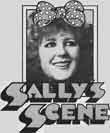 |
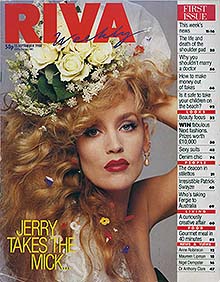 |
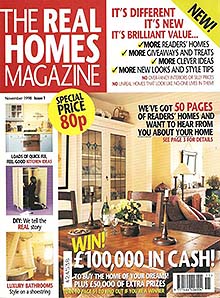 |
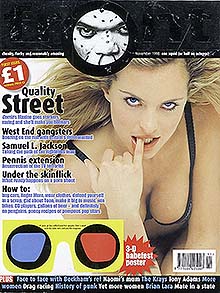 |
| Sally O’Sullivan was a columnist on Hi+Petticoat in 1975 before becoming editor of titles as varied as Options for Men (1984), Good Housekeeping and glossy weekly Riva (1988). In 1998, she launched Real Homes and Front at her own company, Cabal | |||
And what about Sally O’Sullivan, the ‘queen of women’s magazines'? She began with a column in the teenage magazine Hi!, worked in newspapers in the US then set an extraordinary pace as an editor from 1982 to 1998 (as listed in Debrett’s): Options, Country Homes & Interiors, She, Harpers & Queen, Good Housekeeping, Ideal Home, Woman & Home, Homes & Gardens, Homes & Ideas, Living Etc and 25 Beautiful Homes. Whew! No mention of the glossy weekly Riva in the 1980s – it only lasted for eight issues – but so what? With this astounding track record, when she became editorial director of IPC she decided she wanted to own the company. She raised an enormous amount of money but lost out to a management buyout backed by Cinven. Undeterred, she started Cabal Communications, a venture that earned her £10m in 2003 when it was sold to Highbury House. Cabal’s productions – Front, a lads’ magazine, and Real Homes – changed hands several times after Highbury went bust in 2005.
Then where was Eve Pollard, mother of TV presenter Claudia Winkelman, who started as a 1960s tea girl at Honey under Audrey Slaughter and rose to edit two Fleet Street Sundays: the Mirror and the Express. She brought out Aura after the millennium, but it was short-lived. Today, she is honorary president of the prestigious Women in Journalism.Laurie Purden was a contemporary of Audrey, though their paths were different. I never met her (she died in 2020, aged 91) but she appeared to be on the spot when change were happening. She was there in 1960 editing the first ‘teen’ mag Honey, moving on to Petticoat, and then 19. After this came Vanity Fair, which introduced its readers to affordable fashion and was holding its own until a sister magazine – Cosmopolitan, a British version of the American original inspired by Helen Gurley Brown – was launched in 1972. The groundbreaking Nova was another victim of Cosmo's success.
When National Magazines decided to close Vanity Fair, Audrey found backers and took her staff with her to produce Over 21, focusing on the just come-of-voting-age-group (it hadn’t yet dropped to 18). She left in 1979 to join The Sunday Times and was also behind the launch of The Daily Express colour magazine – this was when newspapers realised there was much they could reap from the long established women’s magazines. In 1984 she saw huge possibilities in Working Woman, but this monthly was a step too far in Britain, closing in 1986; in the US it continues to sell. Her step-daughter is Anna Wintour.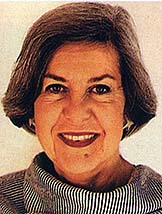 |
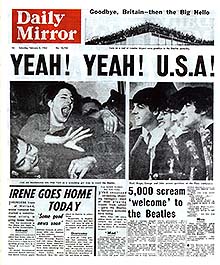 |
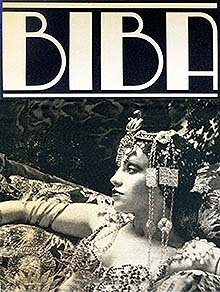 |
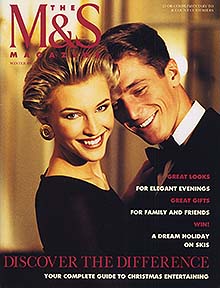 |
| Daily Mirror veteran Felicity Green gave Biba's Barbara Hulanicki her big break in the 1960s and launched M&S Magazine at Redwood 30 years later | |||
Another friend of Laurie’s was Felicity Green. This grande dame in 2014 published Sex, Sense and Nonsense, a memoir that somehow joins the dots that touched my life: being employed as a secretary by Phyllis Digby Morton (known by all at Woman’s Own in the 1960s as 'The Duchess') on Woman & Beauty and then working at Redwood alongside Richard Barber (my editor at Woman) and Magforum’s founder, Tony Quinn. Woman & Beauty was a small format monthly that had a circulation of 120,000 in 1959 and it was where the Duchess made Felicity a journalist. Felicity moved to Daily Mirror, spending the next 21 years working with Hugh Cudlipp (Baron Cudlipp of Aldingbourne). His third wife was Jodi Hyland, editor of the short-lived magazine Woman’s Mirror (Jodi died in 2017). Felicity was associate editor of the Mirror and became the first woman on the Fleet Street paper’s board.
Fashion was Felicity’s passion. Her memoir’s title is a headline from 1967 above a feature about the Paris fashions. ‘There are almost as many ideas here for men as for girls,’ she wrote, ‘to perpetuate and encourage jolly heterosexuality!’ Felicity’s book might not have happened without Sheila Baston, her secretary at the Mirror from 1960 to 1973, who – unbeknown to Felicity – was keeping scrapbooks of press cuttings. Those scrapbooks are now in the Victoria and Albert Museum’s archive. It is enlightening and enjoyable to look back at those black and white newspapers, now yellowed by time.Felicity gave Barbara Hulanicki, founder of the 1960s style store Biba, her first break. Her A-line gingham dress designed for the paper’s readers sold 21,000 by mail order, a result that surprised everyone, especially those who tallied up and cashed the postal orders – the most common payment method before personal bank accounts became the norm.
Felicity returned to magazines through contract publishers Redwood where she worked for another 20 years – she launched M&S Magazine, among others. In 2005 she was elected to the Press Gazette Hall of Fame. I loved what she said on BBC Radio 4’s Desert Island Discs: ‘I don’t know how old I’ll be when I die, but I won’t be wearing beige.’ She was born in 1926.Billie Figg, whose job I took at Woman when she retired in 1982 (female employees were expected to retire at 60 then), was charm personified and she had an enormous input into what readers wore and the clothes they chose. In the mid 1960s, she was the magazine’s fashion editor writing under the house name 'Veronica Scott'. One of her bright ideas was a reader fashion service which, she convinced editor Barbie Buss, would publicise the magazine. At this time magazines that sold nationally could not always tell readers where they could buy the clothes and accessories shown on their pages. Billie planned to support the biggest London and provincial fashion houses with an annual event at which buyers from department stores and shops could see what was available for the new season. And so the Woman British Fashion Awards were born, a glamorous event televised by ITV.
Billie used to advantage what she’d learnt at Woman when she became a script adviser for Thames TV on the soap opera Gems – about the world of fashion design – and she was well qualified to recount the dramas and disasters behind the scenes of a magazine’s fashion department (she died in 2015, aged 92.)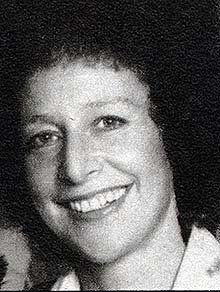 |
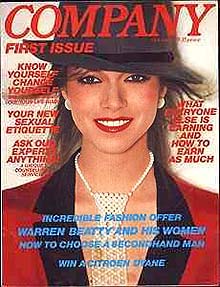 |
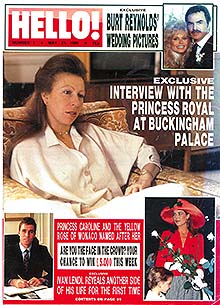 |
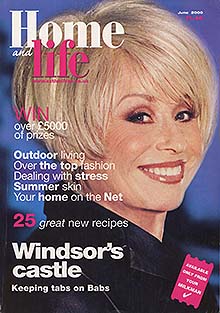 |
| After working on Woman's Own, Maggie Goodman launched Company in 1978, Hello! (1988) and Home & Life (2000) | |||
One of the women I admired was Maggie Goodman whom I met in the 1960s when I was at Woman’s Own. She certainly became a high achiever. She was a feature writer and worked on Cosmopolitan as deputy to Deirdre McSharry before, in 1978, becoming launch editor of Company – the ‘new mag for girls who like a lot of action between the covers’ said its publicity. It had a great run reaching readers who wanted to enjoy the ‘freedom years’ between starting work and having a family. Next stop was Hello! – what a contrast. (Company came to an end in 2014.)
Pat Roberts-Cairns had a stunning career after First Lady (developed by IPC in 1973-4, but never published) where she was fashion editor. She worked in Fleet Street on the Daily Mail and edited Over 21, House Beautiful (which she launched), Tesco Clubcard Magazine (NatMags’ entry into the contract publishing market) and Good Housekeeping. I loved what she wrote in 1997, when Good Housekeeping celebrated its 75th anniversary: ‘There’s no point in having a heritage if you can’t turn it into a future.’ That should be embroidered on a cushion for all editors.
Pat retired in 1999 (Lindsay Nicholson replaced her) and in the 2000 New Year Honours was made OBE for services to journalism. This was the year when she edited Voices, a magazine produced for the Labour government’s Women’s Unit (a contract publishing effort from NatMags), which aroused press controversy. Tony Blair, the prime minister, was using women’s magazines for ‘soft target propaganda’, it was alleged, though it’s anyone’s guess what that phrase means.Women and politics is not generally a subject of interest in publications created for women. (And even after more than 40 years in journalism I don’t know why that should be. Nova had elements of it, as did Spare Rib and Ms Magazine but their circulations were small. In the new feminist Age of Aquarius there is certainly greater awareness by women of women’s rights.)
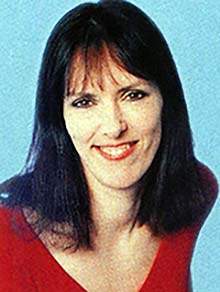 |
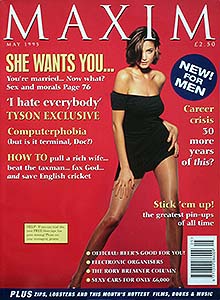 |
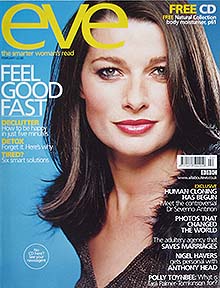 |
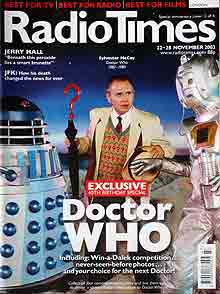 |
| Gill Hudson's career has included editorships at Maxim, Eve, Radio Times and Reader's Digest | |||
Gill Hudson has had an exemplary career. Her outstanding CV includes New Woman (which owners Bauer closed in 2008), Company, Maxim (best-selling magazine for men launched in 1995 by Dennis Publishing and now, as Maxim Digital, the largest young men’s lifestyle brand in America reaching 4 million a month), and Eve (one of the best magazines of modern times, which started at the BBC, went to Haymarket where it ended after only a few years). She ran Radio Times for seven years then was enticed to Reader’s Digest just before the UK company went into administration. Earlier, in 2008, Sarah Sands (formerly of The Telegraph, then editor of London's Evening Standard, followed by BBC Radio 4’s Today, now a media guru at Hawthorn consultancy) had tried to give the Digest (the favourite of dentists’ waiting rooms, before Covid) a sharper, more contemporary feel but it didn’t halt the circulation decline.
Gill, after 10 years at BBC Magazines, knew that Reader's Digest needed investment to revive its fortunes (new subline: ‘small, but perfectly informed’). A management buyout and support from Better Capital (set up to put money into distressed companies) enabled Gill to get the new look and the columnists she wanted. In 2011 her efforts were rewarded when she was named Consumer Editor of the Year at the Periodical Publishers’ Association awards, and was given the British Society of Magazine Editors’ Mark Boxer Award for her outstanding contribution to UK magazine publishing. (Boxer, who died in 1988, aged 57, of a brain tumour, was founding editor of The Sunday Times Magazine in 1962, a cartoonist (drawing as ‘Marc’), and at the time of his death editorial director of Condé Nast Publications. He was married to Anna Ford, the television journalist and TV-am co-founder.
It was fascinating to read that Gill had changed the 72-year-old magazine’s focus to ‘a new generation of switched-on and self improving over-45s ... who are media-savvy, often still have children at home and are driven by the desire for knowledge and self improvement’. That sounded so familiar! I wondered if they were the children of the readers of Womancraft (which I edited in the 1970s) and The Complete Cook (1977-81) or other popular part works of yesteryear – but as the fortunes of the Digest soared then sank, the generation game was over.In February 2014, Better Capital wrote off £23m in investment over four years, saying ‘it’s not worth the time and effort it now takes to run’, and sold it for a nominal sum to Mike Luckwell, a ‘media veteran’ who had the idea of making it the magazine for go-ahead over-60s (where have I heard that before? Hope certainly springs eternal in magazine publishing). Dee Nolan went from Woman in the 1980s to achieve much success, setting up the still-going-strong You supplement for the Mail on Sunday (aided by the fashion-aware Brenda Polan, ex-Woman), then establishing the British popular monthly InStyle – described as ‘the insider’s fashion and beauty bible’ – in 2001. A year later she moved to the US, where InStyle originated, as editor-at-large for publishers Time Inc (then owners of IPC). Then she returned to Australia. InStyle is no longer published as a magazine, but is still available online.
I read in the Financial Times stunning glossy How To Spend It (recently re-titled HTSI), a weekly for the uber-rich with naturally impeccable taste, that she had become a winemaker in a rich-vine area of Victoria. Later, from the web, I learnt she and husband (not the same one she had when we were at Woman, but both are Australian) struck oil. Together they produce an award-winning organic olive oil at their wonderfully named farm Gum Park in Dee’s home town of Naracoorte in South Australia. With her credentials, she had no difficulty getting famous cooks such as Stephanie Alexander (in Australia) and Nigella Lawson (in the UK) to declare it the best ever. I imagine it won’t be long before Dee joins media legend Ita Buttrose in the exclusive AO (Australian Order) club.
Ita was in her early 70s when she started a career on breakfast TV – it’s good to know that there is no discrimination against older women on television in Oz. Now in her 80s, she is chair of the Australian Broadcasting Corporation and is a spokesperson for Alzheimer’s Australia.Jane Reed left a long career in women’s magazines to work on the Eddie Shah newspaper Today, eventually bought and then closed by News International. According to her entry in Debrett’s, she was managing editor of News UK from 1986-9 and director of corporate affairs for News International from 1989 to 2000, after which she was a consultant until 2009. As a keen reader of the letters page of national newspapers, I often came across her correspondence correcting misconceptions or mistakes about Rupert Murdoch et al, but she retired before having to try and explain or justify the events that made hacking – as opposed to hacks – an everyday word in modern journalism. She was made CBE (for services to publishing) in the 2000 New Year Honours.
Being well connected helps in magazine journalism. I read on Magforum that in 1975 Richard Barber was a columnist on a magazine called Hi! and moved onwards and upwards (through Woman’s World, Woman’s Realm, Woman and TV Times) until eventually shepherding OK! from a monthly into the weekly that rivals Hello! as a celebrity-guzzling machine. He left Richard Desmond’s employ in dignified silence to become a freelance writer providing showbiz interviews, mostly for the Daily Mail and Saga Magazine.He and Laurie got on very well when they were at IPC and remained friends long after they left, Laurie told me after our visit to Between the Covers. We also talked about her particular love, Woman’s Journal, where the chief sub was Eden Phillips. Eden is both a lyricist (musicals, songs and song cycles) and chief executive of EdenCo, an editorial and design services company that grew out of links with DeAgostini UK. This part work publisher was once connected to Orbis where I worked on The Complete Cook with Gilly Cubitt. Formerly from Good Housekeeping, she went on to Woman and Family Circle, and then to edit Essentials and eventually BBC Vegetarian Magazine. Another example of the six degrees of separation revealed when writing my memoir.
I am lucky that Laurie was part of my life. She is one of the few remaining people who was there, during the magazine big-time of the second half of the 20th century, one of the many women who influenced readers of all ages through an extraordinary range of publications.Laurie died at the end of August 2022 and would have celebrated her 94th birthday in September. She will be remembered.
A Life in Magazines by Wendy James is available in Kindle and paperback editions from Amazon


